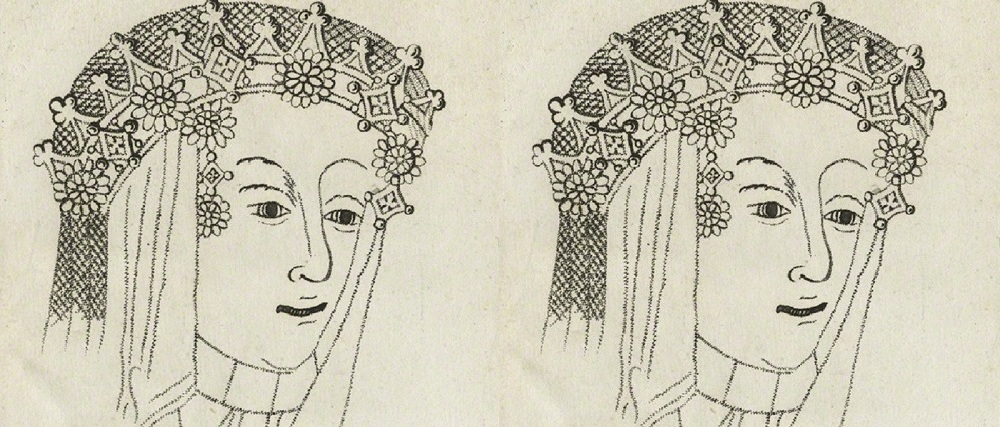Cecily Neville
Posted on 11th January 2021
Cecily Neville was born on 3 May 1415 at Raby Castle, Durham, England to parents Ralph Neville, 1st Earl of Westmorland and Joan Beaufort, Countess of Westmorland. She was known as the ‘Rose of Raby’.
In 1424, at the age of nine Cecily was betrothed to her father’s ward, the thirteen year-old Richard Plantagenet, 3rd Duke of York. Following her father’s death in 1425, her mother took over the wardship of York, and Cecily and York were married in 1429.
It would be nine years before Cecily gave birth to their first child, however twelve more children would follow with seven reaching adulthood, including two future Kings, Edward IV and Richard III.
Their fourth child Edward was born in April 1442 while Cecily and York were living in Rouen, France. Edward was accused of being illegitimate, but this was later discredited and York acknowledged the baby Edward as his own.
York was heir to the throne of England and when Henry VI suffered a mental breakdown, York became Lord Protector of the Realm, however his claim to the throne was lessened when Henry’s wife Margaret of Anjou gave birth to a son, though many believed that the father was not Henry, but the Duke of Somerset; Henry however accepted the son as his own.
Henry VI recovered from his illness and York was removed as Lord Protector.
Both the houses of York and Lancaster had legitimate claims to the throne and this led to the ‘Wars of the Roses’.
Henry VI was captured and imprisoned at the Battle of St Albans in 1455, and the Duke of York became Lord Protector again. During this period, Cecily stayed at Ludlow Castle with her children.
Following defeat at the Battle of Ludford Bridge in 1459, York was deemed a traitor and he fled to Ireland with his son Edward, Earl of March.
Cecily now travelled to London to plead her husband’s case at a parliamentary debate in November 1459, but her husband’s lands were still confiscated and all she could attain was an annual allowance of £600 to support herself and her children.
Following the Yorkist victory at the Battle of Northampton in July 1460, Cecily moved her family to London.
York and his heirs were officially recognised as the successors to Henry VI in the ‘Act of Accord’ in 1460, however Richard, Duke of York, Cecily’s husband was to die alongside his second son Edmund at the Battle of Wakefield in December 1460.
Cecily’s son Edward fought on and proclaimed himself King Edward IV on 4 March 1461. He was briefly overthrown in October 1470, when Henry VI was restored to the throne, but returned in April 1471.
King Edward IV died suddenly on 9 April 1483 and Cecily’s youngest son Richard was appointed protector to Edward IVs son and heir Edward, but Edward mysteriously disappeared along with his brother; Richard, Cecily’s youngest son became Richard III on July 1483. His reign was short lived when he was killed at the Battle of Bosworth Field on 22 August 1485.
Cecily had lived during an unstable time in England with the ‘Wars of the Roses’, where she had seen two families of the Plantagenet Dynasty fight each other for the throne of England. She had seen two of her sons become King, but outlived them both and in her later life she devoted herself to religious duties.
Cecily Neville died on 31 May 1495 at Berkhamsted Castle, Hertfordshire and is buried at the Church of St Mary and All Saints, Fotheringhay, Northamptonshire, in the tomb with her husband Richard, Duke of York and their son Edmund.
Tagged as: Junior Middle Ages
Share this post:





